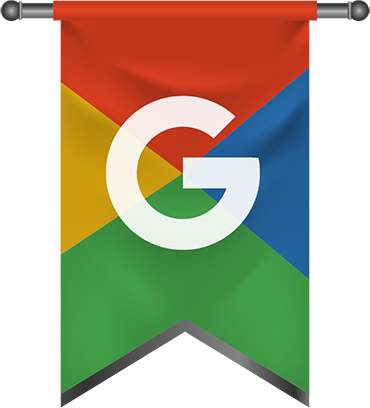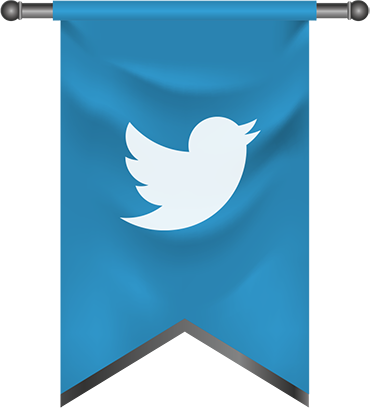Digital advertising offers a wide variety of different options and avenues for a business to reach their prospective audience. With search ads, banner ads, social media ads – and the many specific platforms within each tactic – there’s a lot to consider, so how do you know which is the right solution for you?
Here we have the marketing version of “Game of Thrones,” with seven “houses” all competing to be First of the Marketing Budget, King of the Ad Position and the First Clicks, Lord of the New Orders and Protector of the Revenue Streams. Each house offers its own advantages and opportunities, however, so let’s review the players and see what may be the best option for your business.
 House Google
House Google
Google, by far, is the current king of digital marketing’s Iron Throne and dominant player in the marketplace, with multiple different channels for advertisers to choose from. In its survey on the marketing landscape in 2019, WordStream polled respondents about four different Google services – Google Ads (text ads in search results), Google Display Network, Google Shopping and YouTube advertising. Unsurprisingly, Google Ads and Display ads were the most popular as these can be used by businesses that sell both online and offline, as well as service-driven businesses. The Shopping and YouTube ads showed the least engagement, with 76 percent saying they do not use Google Shopping and didn’t plan to and 61 percent saying the same about YouTube ads.
Google Search was also cited as the platform most likely to see increased investment, with 46 percent of those polled saying they planned to increase their spending this year, while another 44 percent planned to keep their investment flat through the year. On Google Display Network, a quarter of respondents planned to increase their spend, another quarter said they do no advertising on the network, and another 32 percent plan to keep their same level of engagement.
 House Bing
House Bing
The proverbial understudy to Google, Bing is gaining more and more attention by marketers as an alternative to the big G. While the search engine has a decidedly smaller footprint in the marketplace, it also means that there is less competition, making it appealing for those who want to make a big splash with a smaller budget. Bing Ads – now Microsoft Advertising, following a rebranding in late April, as SEJ reports – offer many of the same features as Google Ads and some unique capabilities found only on Bing.
That all said, in WordStream’s survey, 44 percent said they aren’t currently and don’t plan to advertise with Bing, while 6 percent planned to start using the search engine’s advertising options this year.
 House Yahoo
House Yahoo
Oh, how the mighty have fallen. Yahoo is far from the dominant force that it once was, and marketers continue to be aware of that fact. A whopping 90 percent of those polled don’t use the network – Yahoo Gemini – at all. Among those that do, 6 percent planned to keep steady with their investment and only a meager 2 percent of advertisers planned to increase their spend with Yahoo.
Yahoo is certainly a house in decline, but one that’s worth keeping an eye on for some of the most deeply entrenched niches and certain specific markets or demographics. For example, UserZoom reported a few years ago that Yahoo had a distinct edge in the 65-plus user group, making the network a good potential choice for those advertisers who are looking to reach an older audience online.
 House Amazon
House Amazon
Despite Amazon’s dominance in shopping, and shipping and other aspects of our daily lives, it hasn’t drawn the attention of advertisers to the same extreme. While this may be, in part, due to those surveyed being less focused on product sales and more on services or other intangibles, there’s also the fact that Amazon operates more as a closed network. Its ads are targeted to users within Amazon and are meant to promote items for sale through the ecommerce platform, so if a business isn’t listed with Amazon, there’s no incentive to invest in Amazon advertising.
For now, Amazon’s power as a retailer seems to far outweigh its use as an advertising platform, with 84 percent telling WordStream they don’t advertise on the network and only 4 percent are planning to start using Amazon this year.
 House Facebook
House Facebook
Moving away from websites and search engines and over to the realms of social media, we stop first at Facebook – the Google of the social media kingdoms, at least in terms of market dominance. However, the metric comparisons with Google end there. Advertisers have largely embraced Facebook as a marketing platform, with 76 percent of those answering WordStream’s survey saying they either use or plan to use the network this year. Among those, slightly more – 38 percent – say they will increase their spend, with 37 percent planning to maintain their budgets. This makes Facebook the second most popular growth platform behind Google. This jives with our data here at JFG, where we see many of our clients who engage in digital marketing using both Google Ads and Facebook campaigns to reach their target audiences.
Instagram is owned by Facebook, and as a vassal house to Facebook, Instagram is also a huge platform for advertisers that benefits from a substantial user base of its own and a shared ad platform with Facebook. In fact, Recode reported that Instagram was responsible for about 15 percent of Facebook’s overall ad revenues through the last quarter of 2018, and is expected to take the lead on future growth as Facebook reaches market saturation. Highlighting Instagram’s popularity with marketers, 27 percent of WordStream respondents said they planned to increase their investments on the network this year.
 House Twitter
House Twitter
If Facebook is the Google of social media, then Twitter is surely its Bing. More than three-quarters of those surveyed don’t use the platform at all, but 4 percent plan to start this year. Most of those who are advertising plan to stay flat (10 percent), while another 9 percent plan to increase spending with Twitter. With active monthly user rates declining, it may seem like a platform without a future, but what is it those Greyjoys say? What’s dead can never die.
In spite of falling user counts, CNBC reported Twitter stocks surged with news that monetizable daily active users increased alongside ad revenues in Q1 of 2019, beating analyst expectations by a longshot. Paired with Twitter’s other benefits as a platform for influencer marketing and customer service, it could be a sign that Twitter may be finding renewed purpose and, like a certain other Greyjoy, is standing back up after taking a beating to fight another day.
 House LinkedIn
House LinkedIn
Finally, we have LinkedIn which appeared as the top write-in option in WordStream’s survey and is a leading option on many minds this year. In the past, LinkedIn has largely been ignored as an advertising and marketing platform as it strived to be more a network of professionals sharing information and news relevant to business and industry. However, LinkedIn has made substantial investments and improvements to its platform over the past year, and it’s starting to pay off for both advertisers and the network. More and more advertisers are now considering the professional social media platform as a good option for connecting with B2B customers and potential buyers.
LinkedIn offers better targeting options for reaching decision-makers, with ad filters that can narrow down industries, company sizes, job roles and titles and much more. In fact, between organic and paid content, Hootsuite notes that 50 percent of all business-to-business website traffic coming from a social media channel now comes from LinkedIn. Add to that some impressive growth figures – like two new members every second – and you can see that it’s perhaps the house to keep the closest eye on moving forward.
Winning the War
Regardless of the house you choose, there are plenty of ways to win the marketing war. Each option offers different advantages in terms of reach, cost and targeting opportunities, and what will work best for you comes down to considering these factors and investing in the channel that most aligns with your marketing goals.
You don’t have to shoot in the dark like the cameras filming the Battle of Winterfell. You can find help under the banner of JFG. Our brave knights are ready to wage war on your behalf, working to find the most effective points to attack to carry your brand to victory on the field. Find out more by sending us a raven … or simply giving us a call.


